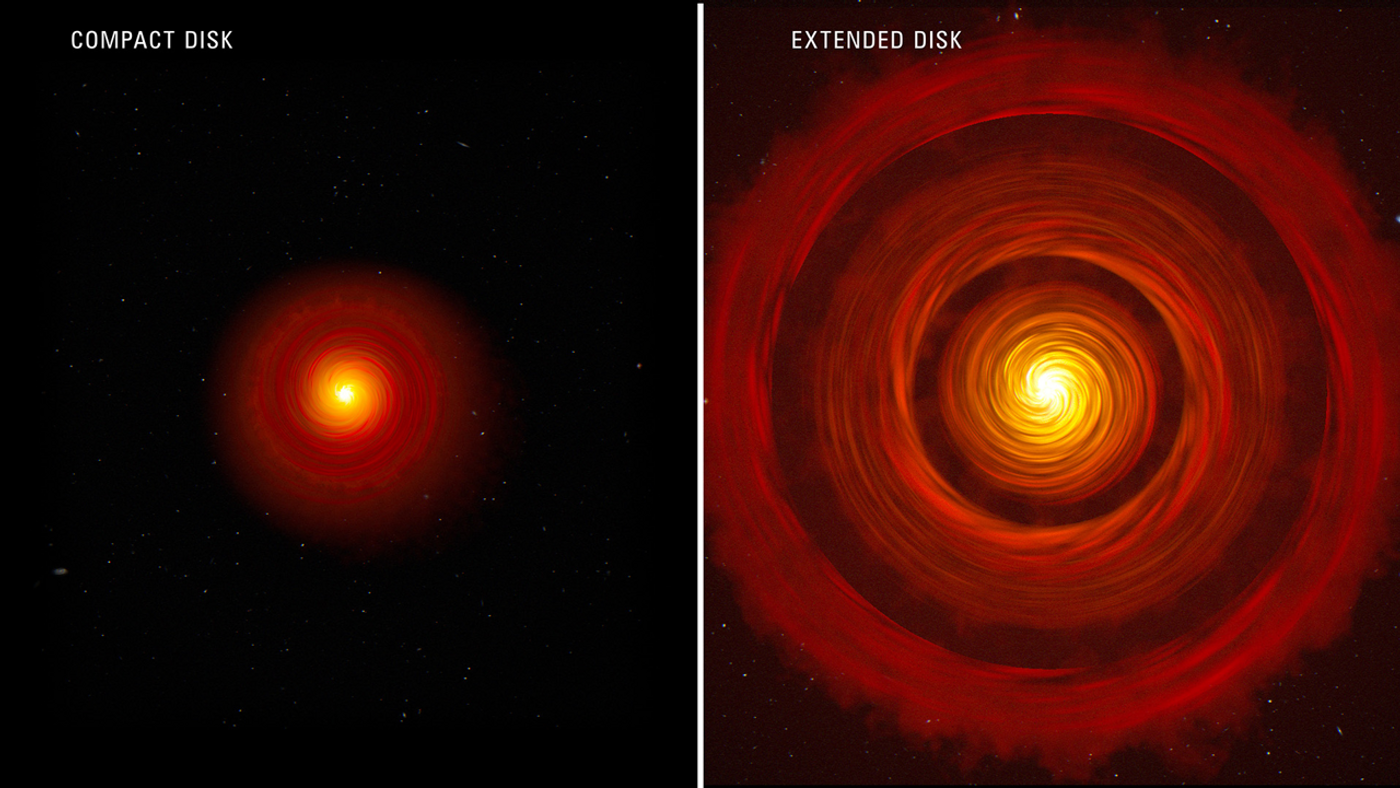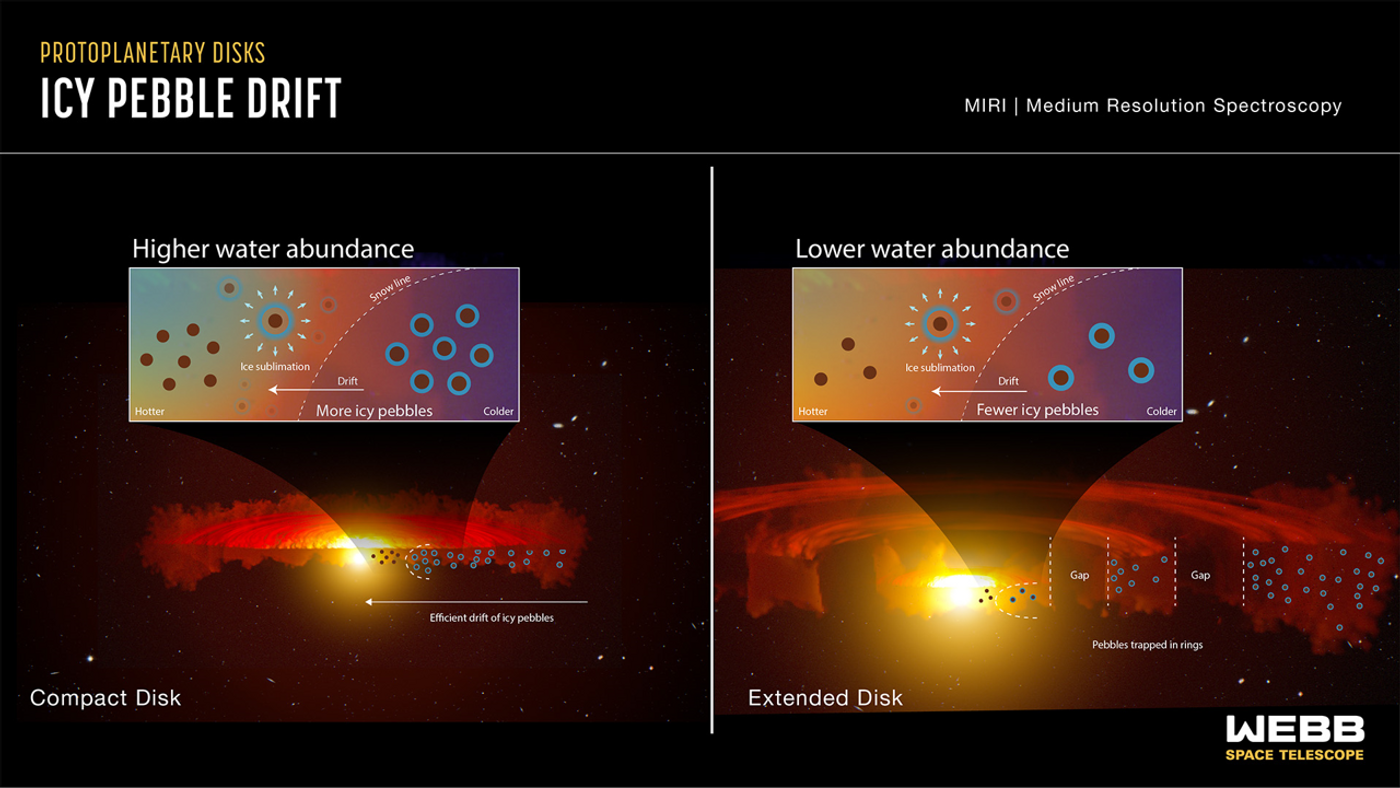A recent study published in The Astrophysical Journal Letters discusses a groundbreaking discovery using the Mid-Infrared Instrument (MIRI) onboard NASA’s James Webb Space Telescope (JWST) to reveal the processes responsible for planetary formation, specifically the transition of water from the colder, outer regions of a protoplanetary disk to the warmer, inner regions. This study was conducted by an international team of researchers and holds the potential to help astronomers better understand the complex processes behind planetary formation, which could also help us better understand how our own solar system formed billions of years ago.
“Webb finally revealed the connection between water vapor in the inner disk and the drift of icy pebbles from the outer disk,” said Dr. Andrea Banzatti, who is an assistant professor of physics at Texas State University and lead author of the study. “This finding opens up exciting prospects for studying rocky planet formation with Webb!”
Using MIRI, which is sensitive to water vapor in protoplanetary disks, the researchers analyzed four protoplanetary disks orbiting Sun-like stars, although much younger, at only 2-3 million years old, and the four disks analyzed consisted of two compact disks and two extended disks. The compact disks were hypothesized to deliver ice-covered pebbles to a distance equivalent to the orbit of Neptune in our solar system, and the extended disks were hypothesized to deliver ice-covered pebbles as far out as six times Neptune’s orbit. The goal of the study was to determine if the compact disks exhibited a greater amount of water in the inner regions of the disk where rocky planets would theoretically form.
Artist’s rendition comparing two types of traditional, planet-forming disks orbiting newborn, Sun-like stars, a compact disk (left), and an extended disk with gaps (right), which were the basis for this study. (Credit: NASA, ESA, CSA, Joseph Olmsted (STScI))
In the end, MIRI revealed the compact disks exhibited larger amounts of cooler water than the extended disks, which is a finding the researchers were expecting, and that the cooler water results from ice evaporating as the pebbles travel farther inward towards their parent star. While the researchers found the initial data confusing, once they overlaid it with data from the extended disks, they found the compact disks contained large amounts of water inside the snow line.
Graphic depicting data from Webb’s MIRI, which is sensitive to water vapor in disks showing the contrast between pebble drift and water content in a compact disk compared to extended disk with rings and gaps. (Credit: NASA, ESA, CSA, Joseph Olmsted (STScI))
This finding is profound as, aside from Earth, the three other rocky planets, Mercury, Venus, and Mars, are completely devoid of water. Present research postulates that water is typically swallowed up by larger planets, leaving the rocky planets water-poor, but this discovery could open allow for the formation of planets closer to their stars to contain much larger volumes of water than previously thought.
“For two months, we were stuck on these preliminary results that were telling us that the compact disks had colder water, and the large disks had hotter water overall,” said Dr. Banzatti. “This made no sense because we had selected a sample of stars with very similar temperatures. Now we finally see unambiguously that it is the colder water that has an excess. This is unprecedented and entirely due to Webb’s higher resolving power!”
The researchers note this new discovery could open doors for further exploring the chemistry of planetary formation within inner disks using JWST.
What new discoveries will researchers make about planetary formation in the coming years and decades? Only time will tell, and this is why we science!
As always, keep doing science & keep looking up!







